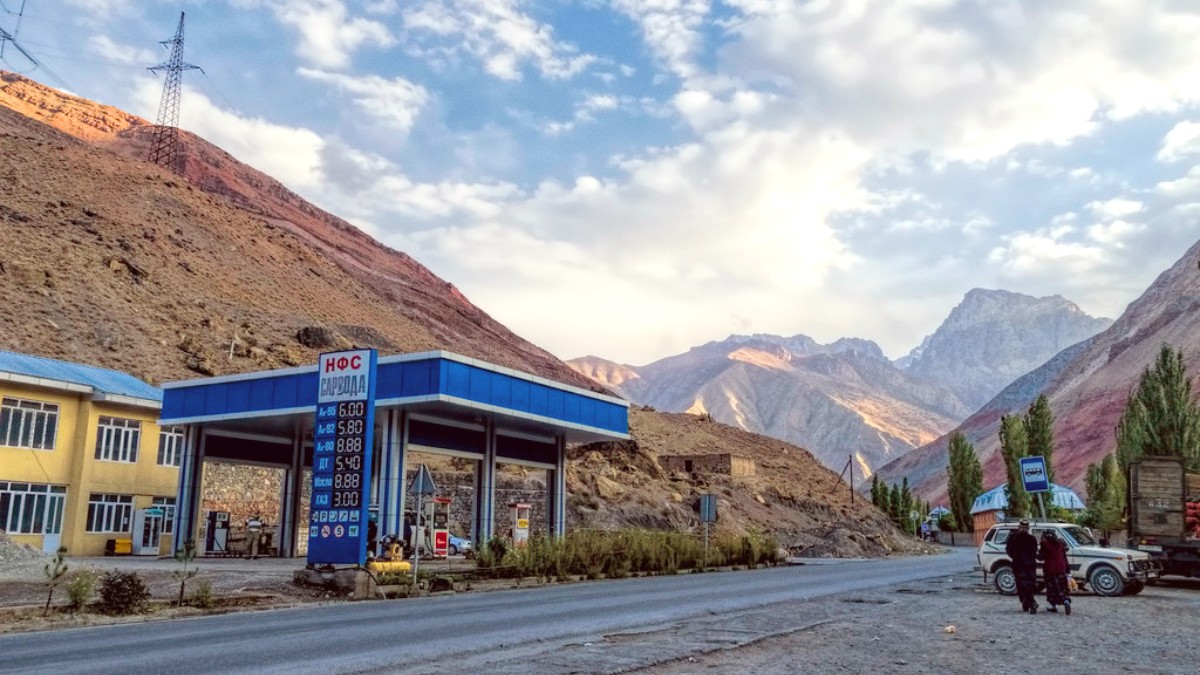
Tajikistan
Lamb, beef, rice, carrots, onions, chickpeas, potatoes, and fresh herbs (dill, parsley, cilantro) form the backbone of many dishes. Dried fruits (apricots, raisins) and nuts also feature, specifically in sweets and some savory dishes.
The cuisine is savory and often has a subtle sweetness, from carrots or dried fruits. Spices are generally used sparingly but effectively, focusing on enhancing the natural flavors of the main ingredients.
Dushanbe's cuisine blends various Tajik regional styles and influences from across Central Asia. Northern Tajik cuisine shows Uzbek influences. Pamiri cuisine, from the mountainous east, is simpler and heartier.
Breakfast (Nonushta): Often a lighter meal. Lunch (Nahori): The main and heaviest meal of the day, typically 1 PM to 3 PM. Dinner (Shomi): Generally lighter than lunch, usually eaten later in the evening.
Do not be surprised if your host offers you several cups of tea throughout your meal.
This is the national dish and recognized by UNESCO as intangible cultural heritage. It is a fragrant rice pilaf cooked in a large kazan (cauldron) with layers of meat (lamb or beef), carrots, onions, and sometimes chickpeas or dried fruits.
Find it in specialized "plov centers" or almost any traditional restaurant.
A hearty, clear soup with large chunks of meat (often lamb or beef), potatoes, carrots, and fresh herbs.
It is a comforting and nutritious staple, especially during cooler months.
Thick, hand-pulled noodles. It can be served as a stir-fry (qovurma lag'mon) with meat and vegetables, or in a savory broth (sho'rbo lag'mon).
Each variant has a distinct flavor profile.
Choy (Tea): Green tea (choy-i sabz) is ubiquitous and consumed all day. Black tea (choy-i siyoh) is also common. Ayron/Chalop: A refreshing, salty yogurt drink. Compote: A sweet, non-carbonated drink made from dried or fresh fruits.
Local beer (e.g., Sim-Sim), vodka, and some local wines are available, though less widely consumed than tea.
While limited, fine dining options are available, mainly within luxury hotels. These establishments feature international cuisine and refined versions of traditional Tajik dishes.
Numerous options are available around Rudaki Avenue and its side streets. These restaurants have comfortable dining with a wide menu of Tajik, Uzbek, Russian, and sometimes European dishes.
Ovqathona (canteens) are local, no-frills eateries with cheap, authentic, home-style meals. Chaykhanas (teahouses) are traditional establishments where people gather to drink tea, socialize, and enjoy hearty meals.
Dushanbe has a growing selection of international restaurants. You can find Turkish, Chinese, Indian, Italian, and various European eateries.
These offer a break from local fare if desired.
The rise in international eateries mirrors the city's increasing global connections.
A taste of home abroad is available.
Possible but with diligence. Focus on salads, bread, potatoes, rice dishes (specify "bez goosht").
More challenging. Meat fat (dumba) is often used. Stick to fresh fruits, vegetables, plain bread.
Most meat in Tajikistan is halal due to the Muslim-majority population.
Very difficult due to the prevalence of bread and noodles. Cross-contamination is a risk.
Dining in a traditional chaykhana like Rohat is an unique cultural and culinary experience. You will sit on low platforms (tapchans), enjoy endless tea, and partake in hearty meals.
This experience shows Tajik social life.
Specialized establishments dedicated to preparing Plov, offering a deep dive into the national dish.
Often bustling and lively.
Dushanbe has many options for dining, from upscale hotels to budget eateries.
If you have severe allergies, carry an allergy card translated into Tajik and Russian, clearly stating your restrictions.
Discover and book local tours and attraction tickets.
Exchange house and pet sitting for unique stays.
Consider local tour operators for specialized experiences or treks outside the city.
They often have current local knowledge.
Look for tourist information centers in Dushanbe for maps and brochures.
They can provide up-to-date information on events.
Dushanbe is generally safe. Standard urban precautions apply, especially in crowded markets. Avoid isolated or poorly lit areas at night.
Wi-Fi is widespread in hotels, cafes, and some public areas. Local SIM cards are affordable and a good option for mobile data.
The local currency is the Tajik Somoni (TJS). ATMs are available, and major cards are accepted in larger hotels/restaurants. Cash is helpful for smaller purchases and markets.
For severe allergies, carry an allergy card translated into Tajik and Russian, clearly stating your restrictions.